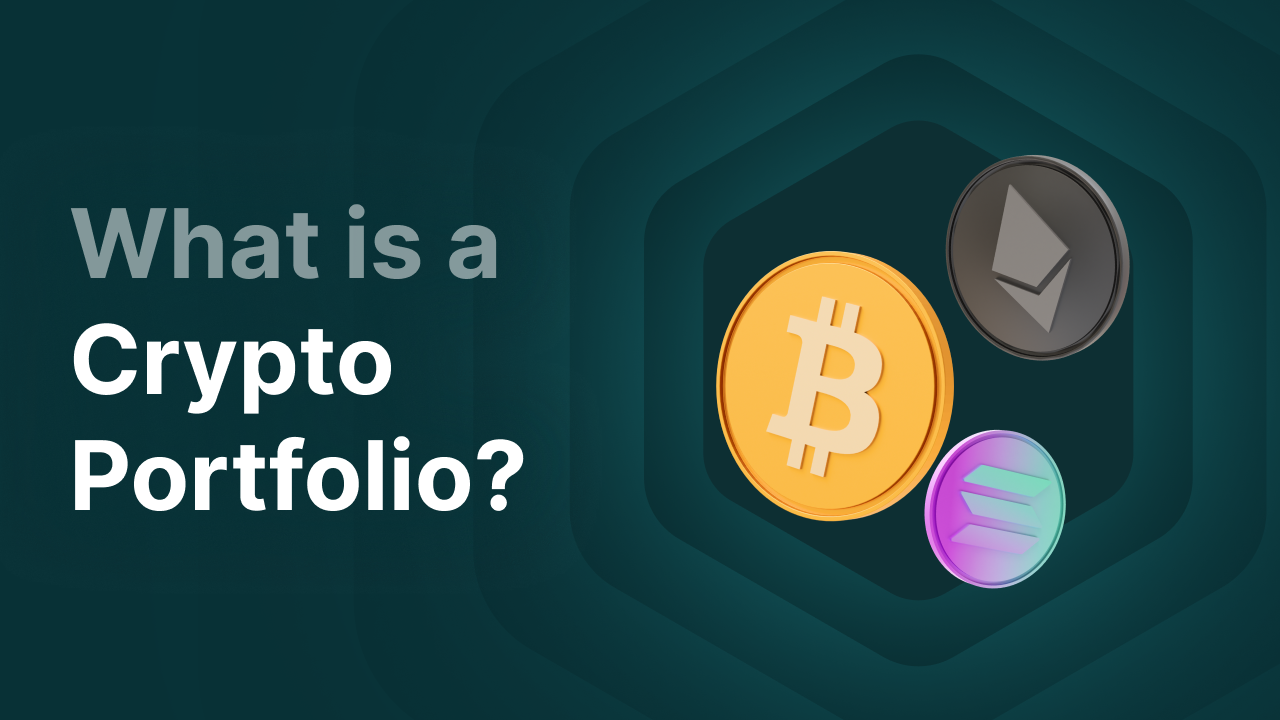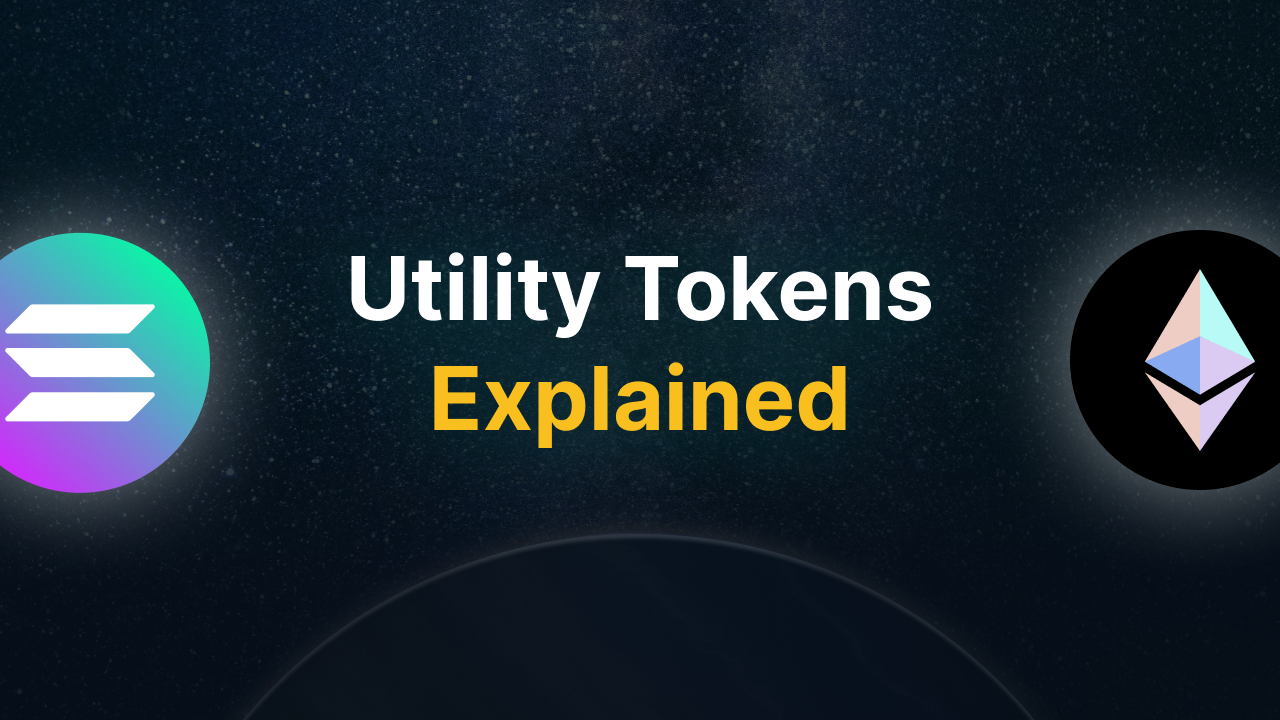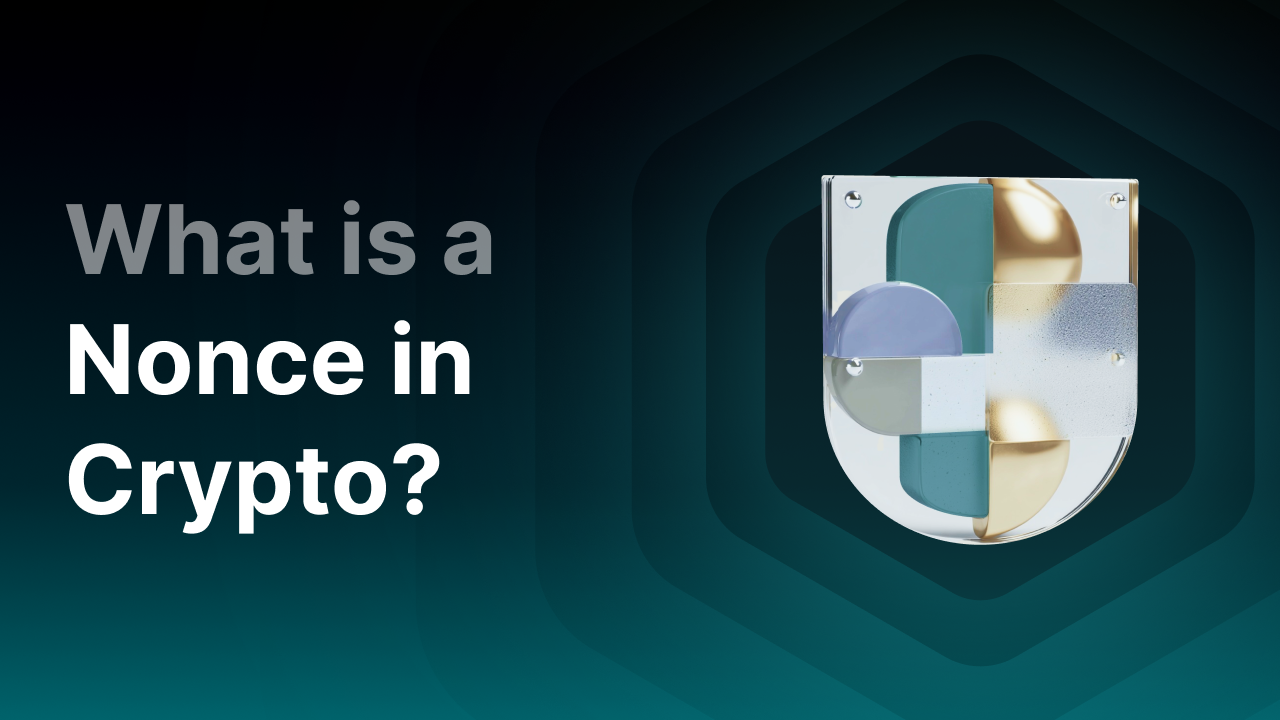What is a crypto portfolio and how do you maintain a balanced portfolio?

What is a crypto portfolio?
A crypto portfolio is a collection of cryptocurrencies owned by an investor. A portfolio typically includes a mix of larger cryptocurrencies like Bitcoin, Ethereum, and Solana, as well as smaller altcoins like memecoins and DeFi tokens. Investors build a crypto portfolio to diversify risk and optimize returns.
Many investors put their money in various financial instruments like stocks, ETFs, commodities, derivatives, and also crypto. Often, crypto is just one component of their overall portfolio.
Key Takeaways
-
Diversification is crucial: Spread your investments across various types of cryptocurrencies (like Bitcoin, altcoins, and stablecoins) to minimize risk.
-
Use a strategy: Whether you choose DCA, bundles, or actively rebalancing your portfolio, a consistent approach helps you stay rational in a volatile market.
-
Research is your foundation: Always do your own research (DYOR) before investing. Don’t blindly trust hype or others’ advice.
-
Rebalancing prevents imbalance: Market movements can disrupt your portfolio’s balance. Regular rebalancing provides control and consistency.
-
An exit strategy is just as important as getting in: Determine in advance when to take profit or exit. This prevents acting on emotion or panic.
Why you need a diversified crypto portfolio
Investors build a crypto portfolio primarily to spread risk. This means they invest in various types of cryptocurrencies from different sectors. Think of tokens from the DeFi sector, AI tokens, memecoins, and stablecoins. By spreading investments, you avoid being heavily exposed to major corrections in one specific sector, which could lead to significant losses. On the other hand, you can benefit from hypes like memecoins that can spike explosively in the short term.
A balanced crypto portfolio often consists largely of major cryptocurrencies with high market capitalization, such as Bitcoin and Ethereum. Larger cryptocurrencies tend to be less volatile than smaller ones and are less likely to undergo significant corrections. However, they also tend to rise less sharply. These cryptocurrencies have also proven themselves in the market, often appearing in the top 10 on CoinMarketCap for years. Therefore, they are considered relatively safer investments compared to small altcoins.
Note! Even large cryptocurrencies can drop significantly during bear markets, sometimes by more than 50% in just a few weeks.
Lastly, a diversified portfolio helps shape your investment strategy depending on your risk tolerance and investment goals.
Strategies for building a crypto portfolio
Whether you’re an experienced crypto investor or just getting started, having a strategy is crucial for making informed decisions and avoiding FOMO or FUD. There are several strategies that can help you build a balanced portfolio in a structured way. Below, we discuss several strategies for beginners and seasoned investors who have gone through various market cycles:
Strategies for beginners:
As a beginner, it can be difficult to know what to invest in. There are now thousands of cryptocurrencies, many of which offer no added value. This can feel overwhelming. The following strategies can help beginners:
-
Start simple:
If you're just starting to invest in crypto, beginning with major cryptocurrencies like Bitcoin, Ethereum, Solana, and Ripple is a commonly used strategy. These are often seen as less volatile and less complex. They also typically have large teams constantly improving the blockchain and adding value. -
Dollar-Cost Averaging (DCA):
Investing a large amount at once can be daunting. So can timing the market. Using the DCA strategy allows you to spread your initial investment over fixed buying moments, such as weekly or monthly. This helps prevent investing a large amount at the wrong time and spreads your average purchase price, reducing volatility. You can often automate DCA on digital asset platforms. Finst, for example, lets you easily create an investment plan through Auto Invest. -
Diversify your crypto portfolio in just 1 click:
Want an easy way to build your portfolio? You can choose to invest in multiple cryptocurrencies in 1 click with crypto bundles. This is not only convenient but also cost-efficient. You only pay our low trading fee of 0,15% once to buy a bundle. Popular bundles include Top 2, Top 20, and Top 25.
Strategies for experienced investors:
If you’re a more experienced investor, it can be tricky to determine your next steps. You likely already have positions on multiple exchanges and DeFi wallets. But what comes next in your crypto journey? The following strategies can help improve your approach:
-
Rebalancing your portfolio:
Over time, allocations in your portfolio can shift as some coins rise (or fall) faster than others. Rebalancing helps you avoid overexposure to one asset and keeps you in control. Many investors decide in advance how much they want to allocate to each coin.
Example: you decide to invest 65% in Bitcoin, 20% in Ethereum, 10% in small altcoins like Dogecoin and Cosmos, and 5% in stablecoins like USDC.Due to market movements, you now find 25% of your portfolio in smaller altcoins. You can rebalance by using your altcoins to buy Bitcoin.
Find this too much work? Tools can help. Think of limit orders, which automatically sell or exchange your crypto when a price target is hit. Finst’s crypto bundles also help, as they are rebalanced weekly. This keeps you close to your desired allocation with minimal effort.
-
Technical and fundamental analysis:
As an experienced trader, you’ve likely seen many charts and spotted trends. Performing technical and fundamental analysis can help you identify entry and exit points.Technical analysis involves looking at indicators and patterns, like a golden cross (when the 50-day moving average crosses the 200-day from below) or a death cross (the opposite).
Fundamental analysis includes researching the team, roadmap, use-case, and transparency of a project. Combining both methods helps you make better decisions, especially in the altcoin market where hype and real value can be hard to distinguish.
Building your crypto portfolio
Perhaps the most important question in this article: how should your crypto portfolio be structured? The short answer: there is no one-size-fits-all solution. It really depends on your goals and risk appetite. You could use the following step-by-step plan:
-
Define goals and risk tolerance
Set your goals beforehand. Are you saving long-term because you believe in crypto or blockchain technology and want to HODL? Investing for retirement? Or are you aiming to earn money in the short term? How much do you want to earn? What risks are you willing to take to reach your goals? These answers will help determine how much to invest and how to allocate. -
Research and DYOR
Doing your own research is vital. No one knows exactly how a crypto will perform. Make informed decisions — ultimately, only you are responsible. Avoid blindly trusting influencers or friends claiming to have made lots of money. Trust your gut, which you develop through research into things like the community, roadmap, and tokenomics of a cryptocurrency. -
Coin selection
After research, it’s time to choose your cryptocurrencies. Again, this depends on your goals and risk appetite. Larger cryptocurrencies like Bitcoin and Ethereum are less volatile but usually grow slower than altcoins — less risk. Smaller altcoins like memecoins can potentially surge, but also drop by over 90% during bear markets — high risk, high reward.Example portfolio: Bitcoin (60%), Ethereum (20%), established altcoins like Solana and Litecoin (10%), smaller and riskier altcoins like BONK and Pump.fun (5%), and stablecoins (5%).
Disclaimer: This is not financial advice, just an example. -
(Optional) Buy dips or DCA
A strategy could be to start investing during dips or add funds using fiat or stablecoins during market corrections (10-20% drops). DCA can also help by expanding your portfolio consistently, regardless of price.
When to part with your crypto portfolio?
The ultimate goal is to profit from your investments. Having a clear crypto exit strategy is just as important as investing itself. Do you know when you’re willing to sell your crypto? It’s wise to define this in advance. Here are some tips:
1. Set price targets
Set price targets in advance. This makes you less susceptible to FUD and emotional decisions. For example, decide to sell Bitcoin every time the price increases by €10,000. Sell 25% of your positions each time and use limit orders to automate it.
2. Recognize market cycles
Like every market, crypto moves in cycles — bull and bear markets. Learn to recognize them. Is there a lot of media hype? Are large investors selling? It might be time to start exiting your positions gradually.
3. Reassess your goals
Sometimes you need to adjust your goals. The crypto market constantly evolves, influenced by global economics and politics.
Your personal situation can change too. Maybe you lost your job. Or maybe you’ve already reached your original goals, but the market still has room to grow?
These are all factors to continuously review. You might need to lower your goals and exit earlier — or raise them and hold longer.
Final thoughts
Building and maintaining a crypto portfolio involves more than just buying random coins. Whether you’re a beginner or experienced investor, a well-thought-out approach is essential to manage risk and seize opportunities. By diversifying properly, rebalancing regularly, and using both technical and fundamental analysis, you increase your chances of success in the volatile crypto market.
Setting clear goals, creating an investment plan, and sticking to an exit strategy helps you avoid emotional decisions. Ultimately, success comes from consistency, knowledge, and discipline. These are what separate speculation from strategic investing.
Crypto remains a dynamic market full of uncertainty — but also opportunity. Those who prepare and act with insight will be stronger in both bull and bear markets.




